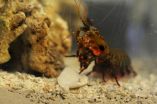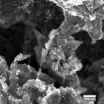(Press-News.org) DENVER (April 22, 2014) – Two studies from the University of Colorado Denver are shedding new light on the most common type of `friend' to be unfriended on Facebook and their emotional responses to it.
The studies, published earlier this year, show that the most likely person to be unfriended is a high school acquaintance.
"The most common reason for unfriending someone from high school is that the person posted polarizing comments often about religion or politics," said Christopher Sibona, a doctoral student in the Computer Science and Information Systems program at the CU Denver Business School. "The other big reason for unfriending was frequent, uninteresting posts."
Sibona's first study examined `context collapse and unfriending behaviors' on Facebook and his second looked at `the emotional response to being unfriended.'
Both studies were based on a survey of 1,077 people conducted on Twitter.
The first study found that the top five kinds of people respondents unfriended were:
High School friends
Other
Friend of a friend
Work friends
Common interest friend
"We found that people often unfriend co-workers for their actions in the real world rather than anything they post on Facebook," Sibona said.
One reason he believes high school friends are top targets for unfriending is that their political and religious beliefs may not have been as strong when they were younger. And if those beliefs have grown more strident over time, it becomes easier to offend others.
"Your high school friends may not know your current political or religious beliefs and you may be quite vocal about them," Sibona said. "And one thing about social media is that online disagreements escalate much more quickly."
The second study looked at the emotional impact of being unfriended.
Sibona found a range of emotions
connected to unfriending, from being bothered to being amused.
The most common responses to being unfriended were:
I was surprised
It bothered me
I was amused
I felt sad
"The strongest predictor is how close you were at the peak of your friendship when the unfriending happened," said Sibona, who has studied the real world consequences of Facebook unfriending since 2010. "You may be more bothered and saddened if your best friend unfriends you."
The study found four factors that predicted someone's emotional response to being unfriended. Two factors predicted that a user would be negatively affected - if the unfriended person was once a close friend to the one who unfriended them and how closely the person monitored their own friend's list.
Two other factors predicted that a user would be less negatively affected - if difficulties were discussed between the friends before the unfriending and if the person unfriended talked about it with others after the unfriending.
The research showed that unfriending happens more often to friends who were once close than to those who are acquaintances.
"Despite the preponderance of weak ties throughout online social networks, these findings help to place unfriending within the greater context of relationship dissolution," the study said.
Sibona said that the 'one size fits all' method of ending digital relationships is unique but with real world consequences that warrant additional research.
"If you have a lot of friends on Facebook, the cost of maintaining those friendships is pretty low," he said. "So if you make a conscious effort to push a button to get rid of someone, that can hurt."
The two studies were published in the 2014 47th Hawaii International Conference on System Sciences.
INFORMATION:
Sibona is currently investigating why people either stay on or leave Facebook. Those interested in helping him determine why people come back or leave can take his anonymous survey at: https://businessucdenver.co1.qualtrics.com/SE/?SID=SV_bKJlBiKySkI872t
Research shows impact of Facebook unfriending
High school friends often first to go
2014-04-22
ELSE PRESS RELEASES FROM THIS DATE:
AMP publishes curriculum recommendations for medical laboratory scientists
2014-04-22
Bethesda, MD, April 22, 2014: The Association for Molecular Pathology (AMP) released a report today in The Journal of Molecular Diagnostics on recommendations for a molecular diagnostics curriculum at both the baccalaureate and master's levels of education. The report was prepared by the Medical Laboratory Scientist (MLS) Curriculum Task Force of the AMP Training and Education Committee. "Our goal was to address the critical need of educating future medical laboratory scientists appropriately in order to manage the rapidly growing and changing realm of molecular diagnostic ...
New patenting guidelines are needed for biotechnology
2014-04-22
HOUSTON – (April 22, 2014) – Biotechnology scientists must be aware of the broad patent landscape and push for new patent and licensing guidelines, according to a new paper from Rice University's Baker Institute for Public Policy.
Published in the current issue of the journal Regenerative Medicine, the paper is based on the June 2013 U.S. Supreme Court ruling in the case Association for Molecular Pathology (AMP) v. Myriad Genetics that naturally occurring genes are unpatentable. The court case and rulings garnered discussion in the public about patenting biological materials.
"The ...
Mantis shrimp stronger than airplanes
2014-04-22
RIVERSIDE, Calif. — Inspired by the fist-like club of a mantis shrimp, a team of researchers led by University of California, Riverside, in collaboration with University of Southern California and Purdue University, have developed a design structure for composite materials that is more impact resistant and tougher than the standard used in airplanes.
"The more we study the club of this tiny crustacean, the more we realize its structure could improve so many things we use every day," said David Kisailus, a Kavli Fellow of the National Academy of Science and the Winston ...
NASA gets 2 last looks at Tropical Cyclone Jack
2014-04-22
VIDEO:
This 3-D flyby from NASA's TRMM satellite of Tropical Cyclone Jack on April 21 shows that some of the thunderstorms were shown by TRMM PR were still reaching height of...
Click here for more information.
Tropical Cyclone Jack lost its credentials today, April 22, as it no longer qualified as a tropical cyclone. However, before it weakened, NASA's TRMM satellite took a "second look" at the storm yesterday.
The Tropical Rainfall Measuring Mission or TRMM satellite had two ...
High-performance, low-cost ultracapacitors built with graphene and carbon nanotubes
2014-04-22
WASHINGTON D.C., April 22, 2014 -- By combining the powers of two single-atom-thick carbon structures, researchers at the George Washington University's Micro-propulsion and Nanotechnology Laboratory have created a new ultracapacitor that is both high performance and low cost.
The device, described in the Journal of Applied Physics, capitalizes on the synergy brought by mixing graphene flakes with single-walled carbon nanotubes, two carbon nanostructures with complementary properties.
Ultracapacitors are souped-up energy storage devices that hold high amounts of energy ...
International team sequences rainbow trout genome
2014-04-22
PULLMAN, Wash.—Using fish bred at Washington State University, an international team of researchers has mapped the genetic profile of the rainbow trout, a versatile salmonid whose relatively recent genetic history opens a window into how vertebrates evolve.
The 30-person team, led by Yann Guiguen of the French National Institute for Agricultural Research, reports its findings this week in Nature Communications.
The investigators focused on the rate at which genes have evolved since a rare genome doubling event occurred in the rainbow trout approximately 100 million years ...
Wildlife response to climate change is likely underestimated, experts warn
2014-04-22
AMHERST, Mass. – Analyzing thousands of breeding bird surveys sent in by citizen scientists across the western United States and Canada over 35 years, wildlife researchers report that most of the 40 songbird species they studied shifted either northward or toward higher elevation in response to climate change, but did not necessarily do both.
This means that most previous studies of potential climate change impacts on wildlife that looked only at one factor or the other have likely underestimated the effects of environmental warming, say research wildlife biologists ...
Vacuum ultraviolet lamp of the future created in Japan
2014-04-22
WASHINGTON D.C., April 22, 2014 -- A team of researchers in Japan has developed a solid-state lamp that emits high-energy ultraviolet (UV) light at the shortest wavelengths ever recorded for such a device, from 140 to 220 nanometers. This is within the range of vacuum-UV light -- so named because while light of that energy can propagate in a vacuum, it is quickly absorbed by oxygen in the air.
This fact makes vacuum UV light extremely useful for industrial applications from sterilizing medical devices to cleaning semiconductor substrates because when it strikes oxygen-containing ...
Applying math to biology: Software identifies disease-causing mutations in undiagnosed illnesses
2014-04-22
(SALT LAKE CITY)–A computational tool developed at the University of Utah (U of U) has successfully identified diseases with unknown gene mutations in three separate cases, U of U researchers and their colleagues report in a new study in The American Journal of Human Genetics. The software, Phevor (Phenotype Driven Variant Ontological Re-ranking tool), identifies undiagnosed illnesses and unknown gene mutations by analyzing the exomes, or areas of DNA where proteins that code for genes are made, in individual patients and small families.
Sequencing the genomes of individuals ...
New electric fish genus and species discovered in Brazil's Rio Negro
2014-04-22
AMHERST, Mass. – Scientists at the University of Massachusetts Amherst and the Instituto Nacional de Pesquisas da Amazônia (INPA), Brazil, this week report that they have discovered a new genus and species of electric knifefish in several tributaries of the Negro River in the Amazonia State of Brazil.
Professor Cristina Cox Fernandes at UMass Amherst, with Adília Nogueira and José Antônio Alves-Gomes of INPA, describe the new bluntnose knifefish in the current issue of the journal Proceedings of the Natural Sciences of Philadelphia.
Their paper offers details about ...
LAST 30 PRESS RELEASES:
Drone sampling of whale breath reveals first evidence of potentially deadly virus in Arctic
Roman soldiers defending Hadrian’s Wall infected by parasites, study finds
Pinochet’s prisoners were tormented with music but still found solace in it, a new book reveals
Fertility remains high in rural Tanzania despite access to family planning
AI-assisted device can improve autism care access
Kinetic careers
Uncovering how parasitic plants avoid attacking themselves to improve crop resistance
Nanoparticle vaccine strategy could protect against Ebola and other deadly filoviruses
Study finds brain care score can predict risk of stroke across racial groups
Key lung immune cells can intensify allergic reactions
Do hormones explain why women experience more gut pain?
New materials conduct ions in solids as easily as in liquids
Breakthrough of the Year: Renewable energy begins to eclipse fossil fuel-based sources
LLM use is reshaping scientific enterprise by increasing output, reducing quality and more
Introducing LightGen, a chip for ultra-fast, ultra-efficient generative AI
Astronomers see fireworks from violent collisions around nearby star
ACC/AHA issue new guideline on managing congenital heart disease in adults
Cosmic crash caught on camera
Is talented youth nurtured the wrong way? New study shows: top performers develop differently than assumed
Ants: An untapped resource in the development of antibiotics?
Archaeologists use AI to create prehistoric video game
Mitochondria migrate toward the cell membrane in response to high glucose levels
Tiny viral switch offers hope against drug-resistant bacteria
Most parents aware of early peanut introduction guidelines, but confused about details
HPV vaccine can protect against severe lesions of the vulva and vagina
Virtual care provision and emergency department use among children and youth
Quadrivalent HPV vaccine and high-grade vulvovaginal lesions
Insights into dry eyes gained from stem cell-derived tear glands
Researchers identify 166 human pluripotent stem cell lines available for use in clinical applications
Europa Clipper instrument uniquely observed interstellar comet 3I/ATLAS
[Press-News.org] Research shows impact of Facebook unfriendingHigh school friends often first to go




